|
LG Electronics and Panasonic are some of the companies behind the new UHD Alliance’s “Filmmaker Mode” for TVs, and both are at CES 2020, with their new TVs, a show where 8K is prominent.
The 8K Association (8KA) has a mission: to grow appreciation and awareness of 8K products which will provide an even higher level of entertainment which is paramount to large screen entertainment. Last August, the 8KA announced that “key performance attributes for 8K televisions have been defined as part of the 8KA technical program. Performance criteria were created in concert with the association’s membership which include leading consumer electronics brands, panel manufacturers and other leadership companies within the 8K ecosystem with a strong pulse on current and future technology trends.”
Although we’ve seen 8K TV models at previous CES, and other industry events, 2020 looks like the year when 8K will start to grow. There are, no doubt, efforts, from all involved, to make it happen. A brief look at the hours pre-CES 2020 confirm the trend. Also important is the the appearance in Las Vegas of the first models – 8K and 4K – including the technology we mentioned here at PVC recently, in one article dedicated to UHD Alliance’s “Filmmaker Mode” for TVs, which will officially launch at CES 2020. We wrote, then, that readers could “expect to see new TVs from LG Electronics, Panasonic or Vizio featuring the tech.”
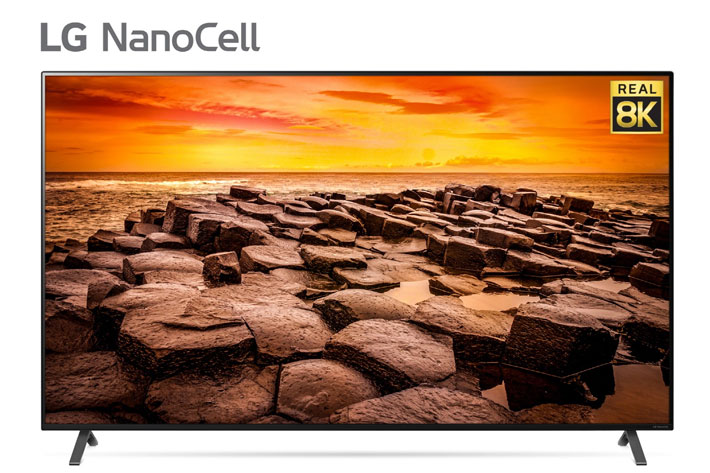
LG Electronics has the “Real 8K” models
LG Electronics is present with, among a plethora of models, two 8K solutions: 88- and 77-inch class Real 8K models. The 2020 LG OLED ZX Real 8K models are not alone, though, as the 2020 LG NanoCell TV lineup is highlighted by six Real 8K TV models (75- and 65-inch models in Nano99, Nano97 and Nano95 series), all exceeding the stringent requirements needed to display the official industry 8K UHD logo from CTA.
Combining OLED’s self-emissive technology and absolute blacks with support for Dolby Vision IQ and the UHD Alliance’s new Filmmaker Mode, 2020 LG OLED TVs bring the cinema into the living room with new levels of realism. The new Filmmaker Mode, supported by Hollywood’s leading directors, delivers images the way they intended. LG OLED TVs also have been recognized by Hollywood Professional Association with its Excellence in Engineering Award as the first and only with integrated hardware-level calibration software, further solidifying LG’s OLED TV as Hollywood’s leading reference consumer display for use in content production.
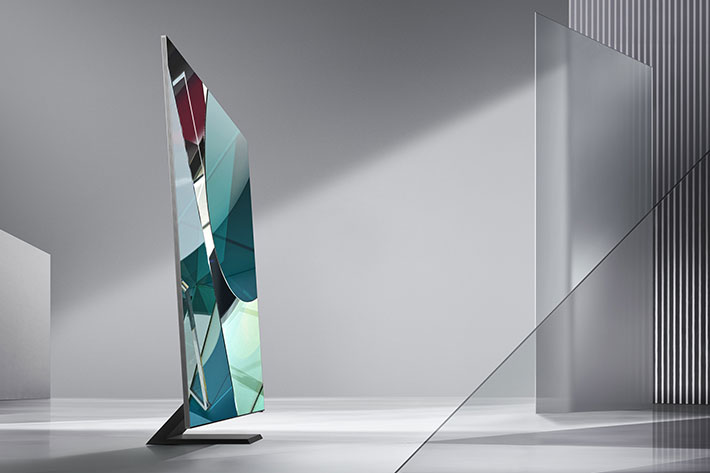
Samsung 8K TVs get 8KA and CTA logos
Samsung also has new 8K models at CES 2020, and the next-generation QLED “provides consumers with an unprecedented viewing experience and unparalleled smart home integration. It leverages the power of enhanced AI (Artificial Intelligence) technology to improve audio, video and smart capabilities. According to the company, “the ultimate expression of these different innovations is the new, flagship Q950TS QLED 8K TV, which is the first TV in the industry to feature surround sound audio, true-to-life 8K resolution and a stunning, ultra-thin form factor.”
“8K resolution has the potential to transform our industry. Screens over 75” are the fastest growing segment in the market, and that segment is where 8K resolution matters the most,” said Joe Stinziano, Head of Consumer Electronics Business at Samsung Electronics America. “Our 2020 8K lineup demonstrates the power of this potential. Its unprecedented immersive capabilities and unparalleled smart features empower consumers to pursue their passions more simply and more comprehensively than ever before.”
The 2020 QLED 8K lineup reflects Samsung’s commitment to leading the industry in the implementation, adoption, and playback of 8K resolutions. Every model in the lineup will meet the requirements of the 8K Association’s Certified Test Specifications as well as the CTA 8K Ultra HD Display Definition, says Samsung. At the same time, the QLED 8K lineup is among the first in the industry to support the playback of native 8K content. In 2020, consumers will be able to enjoy and stream AV1 codec videos filmed in 8K on QLED 8K TVs. All Samsung TVs in the 2020 8K line will ship with this capability built-in.
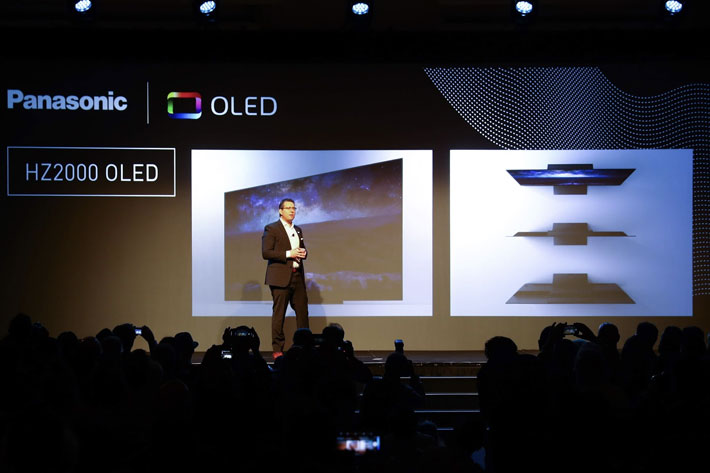
Panasonic and the Filmmaker Mode
Panasonic, as expected, has its new TV with Filmmaker Mode, the HZ2000 OLED, which seems ready to inherit the throne from the 2019 flagship OLED model, GZ2000. Briefly mentioned during the press presentation at CES 2020, the Panasonic HZ2000 OLED TV is expertly built by collaboration between Hollywood professionals and Panasonic and Technics engineers to provide beautiful color, immersive sound and smart home connectivity. Although details are scarce at the moment, it was mentioned that the new model will offer higher peak brightness levels than the average OLED. The HZ2000 OLED TV is a HDR capable 4K model.
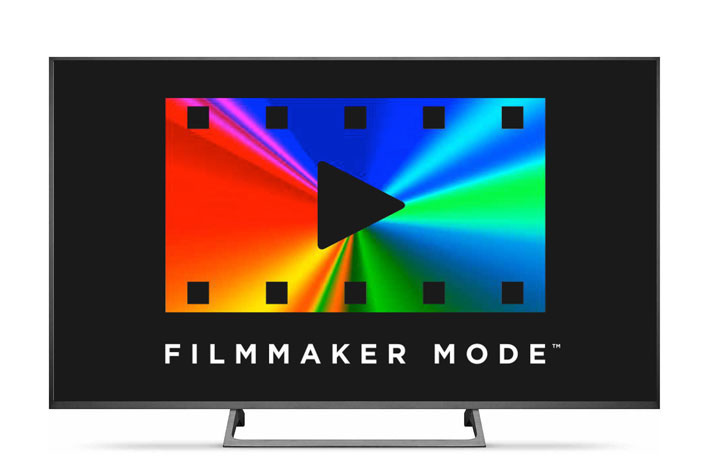 Vizio, another company that supports Filmmaker Mode, is also at CES with its first models using the tech, and its 2020 line-up will feature HDMI 2.1, with HDMI VRR (Variable Refresh Rate) up to 120Hz present in the P9 and PX LCD ranges. The complete line-up includes models of Vizio’s V-Series, M-Series, P-Series and P-Series Quantum families, the company’s first OLED TV. Vizio, another company that supports Filmmaker Mode, is also at CES with its first models using the tech, and its 2020 line-up will feature HDMI 2.1, with HDMI VRR (Variable Refresh Rate) up to 120Hz present in the P9 and PX LCD ranges. The complete line-up includes models of Vizio’s V-Series, M-Series, P-Series and P-Series Quantum families, the company’s first OLED TV.
The models from these and other brands on display at CES 2020 suggest that although 8K is on the horizon, not everyone seems ready to move towards a resolution that continues to have a problem: the lack of content. Even 4K TVs are hard to justify, many times, because of the same problem, but the industry is already moving towards a higher resolution that, in the end, brings little gain to the consumer.
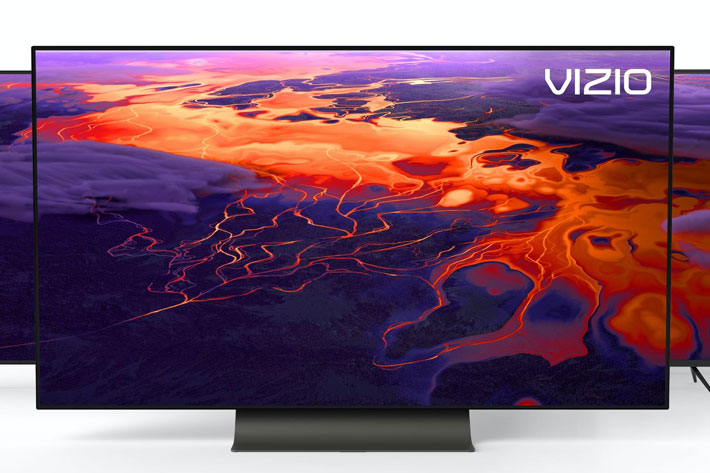
Should I buy a 8K TV?
There are some TV experiments, but there is no real consumer 8K video content and no sign that it will change. And moving to 8K is not just about buying a TV, everything from cables to equipment needs to be upgraded. Also your Internet bandwidth, if you’re thinking about watching Netflix or Amazon, if they ever move to 8K. Most of the content available to watch now in 8K TVs is lower-resolution content upconverted.
Still, it’s good to see a cross-industry group as the 8K Association focused on facilitating the growth of the 8K ecosystem. The key performance attributes for 8K televisions that have been defined as part of the 8KA technical program were created in concert with the association’s membership which include leading consumer electronics brands, panel manufacturers and other leadership companies within the 8K ecosystem with a strong pulse on current and future technology trends. The organization’s mission is to grow appreciation and awareness of 8K products which will provide an even higher level of entertainment which is paramount to large screen entertainment.
“Defining the key attributes for an 8K TV specification demonstrates the 8KA’s focus to quickly define a critical step in the growth in next-generation video technology,” noted 8KA Executive Director, Chris Chinnock, last August, during the announcement. “To reach this milestone is a great testament to the cooperative spirit the members of the 8K Association enjoy along with our shared enthusiasm for the 8K ecosystem expansion.”
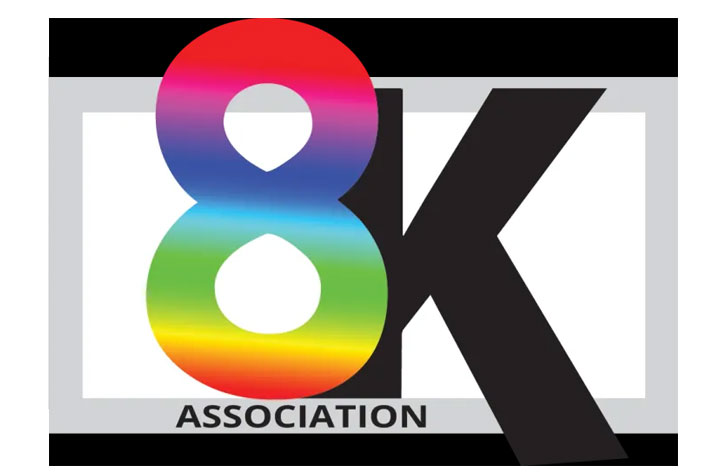
Promote the rapid growth of 8K content
8K refers to the latest and highest-resolution standard for content creation, distribution and television displays that enables over 33 million pixels of resolution, which is 4 times sharper than the UHD / 4K standard. The new 8K TV specification defined by the 8K Association includes recommended performance levels for High Dynamic Range (HDR) and Color performance along with interface requirements to help ensure consumers have confidence in their newly purchased 8K TVs. A compliance test set will be developed next by 8K Association members, thus enabling a transparent testing process. The 8KA plans to promote a logo on any member’s 8K TV that meets or exceeds the newly defined technical standard.
Along with the newly defined performance standard, the 8K Association continues its rapid growth with its broad membership having more than doubled over the past months. The organization’s newest members span video capture, television chipset technology, audio and video technology providers, and video entertainment creators—all with an eye toward efforts to promote the rapid growth of 8K content, delivery, and displays.
 
In 8K, are two logos better than one?
According to data from top market researchers, the 8KA membership now includes TV brands that hold over 40% of the TV market in the United States in the 1st half of 2019 and an estimated 90% of 8K panel production to date. With such a broad representation of companies that are driving the future of the highest-resolution TVs and displays, the 8K Association expects its broad membership base to continue to work together to define and promote 8K technology standards throughout the ecosystem of content, distribution and display.
The newly released tech spec includes specifications for 8K Input Parameters (bit depth, frame rate, chroma sub-sampling), Display Performance (resolution, peak brightness, black level, color gamut, white point), and the Interface & Media formats (High Dynamic Range, codec). Here are some key specs:
- Resolution: 7680 x 4320 pixels
- Input Frame Rate: 24p, 30p and 60p frames per second
- Display Luminance: More than 600 nits peak Luminance
- Codec: HEVC
- Interface: HDMI 2.1
- Additional performance and interface specifications (available to members)
One should note, though, that the 8K Association (8KA) is not the only organization defining the specifications for 8K, because the Consumer Technology Association (CTA) and its member companies also has published its display definition norms, in September 2019. The CTA logo for 8K Ultra High-Definition (UHD) televisions – for use with 2020 model products – will, according to the organization, help retailers and consumers identify products that meet the technology industry’s 8K Ultra HD requirements. But isn’t the fact that there are two organizations defining the norms for 8K confusing to the consumer: in the end which 8K TV is best? The one with the two logos?
|





 Vizio, another company that supports Filmmaker Mode, is also at CES with its first models using the tech, and its 2020 line-up will feature HDMI 2.1, with HDMI VRR (Variable Refresh Rate) up to 120Hz present in the P9 and PX LCD ranges. The complete line-up includes models of Vizio’s V-Series, M-Series, P-Series and P-Series Quantum families, the company’s first OLED TV.
Vizio, another company that supports Filmmaker Mode, is also at CES with its first models using the tech, and its 2020 line-up will feature HDMI 2.1, with HDMI VRR (Variable Refresh Rate) up to 120Hz present in the P9 and PX LCD ranges. The complete line-up includes models of Vizio’s V-Series, M-Series, P-Series and P-Series Quantum families, the company’s first OLED TV.



 then "Add to Home Screen"
then "Add to Home Screen"